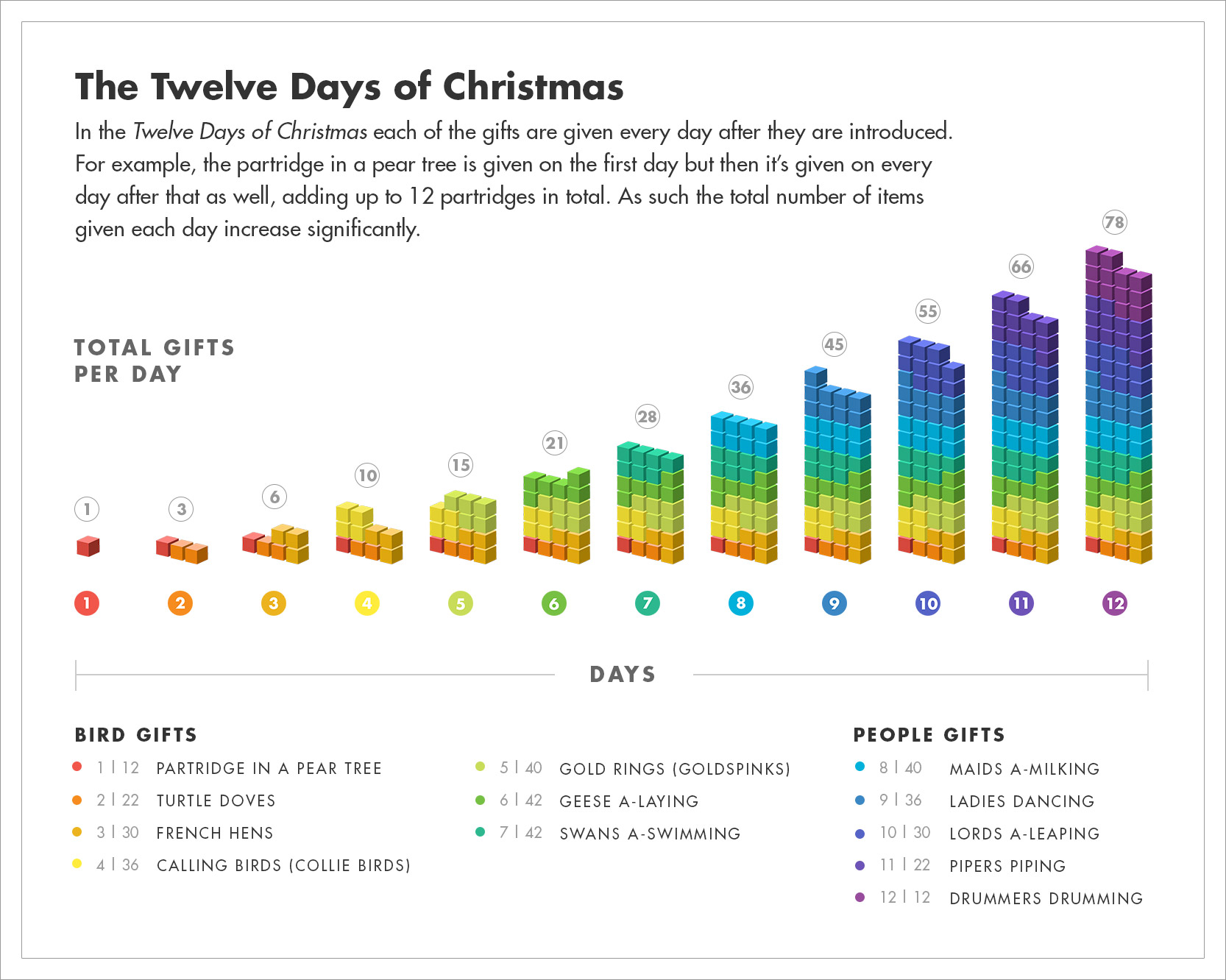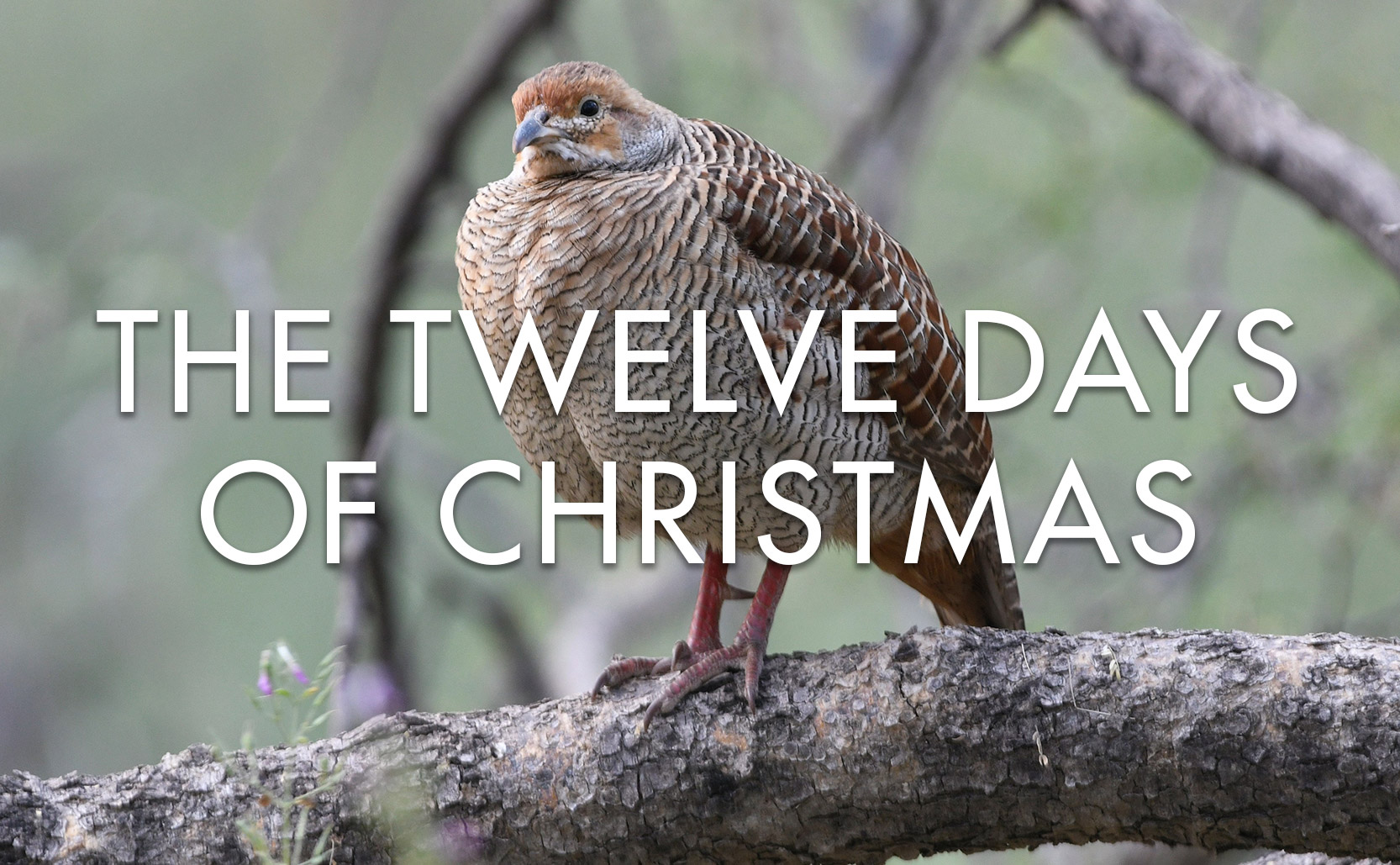The Christmas carol about the 12 days after Christmas that is mostly full of birds.
The Christmas carol The Twelve Days of Christmas corresponds to the 12 day Christian season following Christmas. The 12 days of Christmas are after Christmas, not before it. Starting with Christmas Day as the first day the 12 days of Christmas end on January 5th the eve of the Epiphany. Incidentally the evening of January 5th, the 12th night, is the title reference in Shakespeare’s romantic comedy Twelfth Night.
As for the song, it was originally a poem and has a cumulative verse style. It probably began life as a memory & forfeit game for twelfth night festivities where participants would recite the cumulative lines faster and faster until making a mistake and be eliminated. As a poem the earliest known publication is from 1780 in Mirth Without Mischief (but the poem is likely much older). It was finally set to music in 1868.
1 + (1+2) + (1+2+3) …
The song is sung from the perspective of someone whose true love gives them gifts on each of the 12 days of Christmas. The first day is a partridge in a pear tree, the second day is two turtle doves, etc. However, the gifts are given repeatedly on each new day plus the latest gift. For example a partridge in a pear tree is given on the first day but it’s given on the other 11 days as well, meaning 12 partridges are given in total. Adding it all up there are 364 total items given across the 12 days – most of which are birds.

A covey, a bevy, a brood, …
The first 7 days of gifts are all birds which, adding them up across the 12 days, means 224 birds are given in total. That’s a lot of birds. This works when you realize that the five gold rings were not originally jewelry.
As the lyrics have changed over the years, the five gold rings most likely started out as either five ringed pheasants or five “goldspinks” (an older name for the goldfinch). As strange as the song is this would make a lot more sense since the first 4 days are all birds and then the next 2 are also birds.
The four calling birds also make little sense (birds sing but they don’t exactly call), but looking back at earlier versions of the lyrics this was previously “four collie birds”. The name “collie bird” is an older name for a blackbird with collie being a reference to colliery (another name for a coal mine).
The gift of a partridge is straightforward enough, but the pear tree is an odd addition. The English word “partridge”, through a series of language leaps, comes from the Greek “perdix” which is related to “perdesthai” meaning “to fart”. The partridge is a bird named after farting and probably acquired this flatulent name because of the sound its wings make when flapping. The “pear tree” is probably because it sounds like “pertis”, the French for “partridge”.
Go-old Rings
The melody and lyrics we know today are because of late 19th / early 20th century English musician Frederic Austin. Around 1905 Austin standardized The Twelve Days of Christmas, setting it to a traditional folk tune, which was published by Novello & Co Ltd. in 1909. He changed collie birds to calling birds and he also gave us perhaps the most memorable part of “five go-old rings”.
Austin made the fifth gift the jewelry of gold rings we know today. His innovation of singing this part as “five go-old rings” is copyrighted and as such royalties have to be paid to Novello & Co Ltd. should you use their version of the song.





